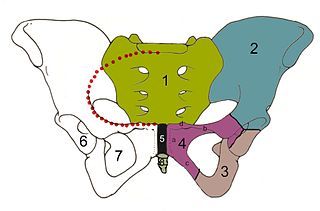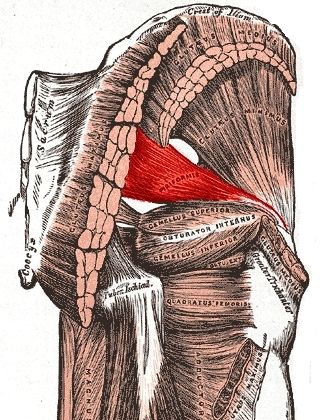|
|
| Tapestry Life Resources & Body Balance II Newsletter | Resources for Body,
Mind, Heart & Spirit
May 2013 |
|
All articles written by Suzanne H. Eller unless otherwise indicated. © Suzanne H. Eller, 2013 |
|
 | |
©Photo by Tony Northrup; purchased online at www.northrup.org |
Greetings!
Spring is a favorite season of everyone. There is new life everywhere. Birds and other animals are raising tiny families. The shrubs and trees are blooming, and the tulips are pushing through the earth to create a riot of color. Folks are heading to the nursery for new plants and are spreading weed 'n feed on the yard. There is nothing like warmer weather and longer days to lift the spirits and give everyone energy to work in the yard or tackle some spring cleaning chores inside. We at Body Balance hope you are enjoying this beautiful season. This flip side of spring weather is that many struggle with allergies or with aches and pains brought on by their renewed interest in cleaning, planting, and exercising. Don't forget that a massage can help with those aches and pains and even with allergy symptoms. The last couple of months have been a time of continuing education for Suzanne, who attended classes in Biodynamic Craniosacral Therapy at the NC American Massage Therapy convention and classes in Sacrology using the Sacro-Wedgy tool. Read more about both of these below. She also completed her Touch for Health training by taking Touch for Health IV in Charlotte. Read about how Touch for Health Benefits the Whole Person by clicking the link. Mother's Day is this weekend. If your mother enjoys massage, think about a gift certificate for her on this special day and give her the gift of relaxation. If you are a mother and want a massage, give your loved ones the hint. We make it easy with our online gift certificates. One of our own is becoming a mother. Laura Queen will be leaving Body Balance II at the end of May to have her second child. She also graduates from Lenoir-Rhyne University this month with a degree in nursing. Congratulations, Laura, on completing your education and on your new family addition. We wish you the best. We look forward to seeing you over the spring and summer months. Like you, we will be taking some time off for vacation. Be sure to call early to schedule your appointment. |
|
Using the SacroWedgy®
A treatment for back and leg pain
 | |
Image of pelvic girdle from Wikicommons
The gold area (1) is the sacrum; the teal area (2) is the ilium; the connection site is the SI Joint. |
The sacrum is the triangular bone at the end of the spine that connects the hip bones forming the sacroiliac joints. It has five segments that fuse together by early adulthood. The coccyx, or tail bone, lies at the end of it. There is a series of four openings on each side of the sacrum, through which nerves and blood vessels travel. Massage pioneer Ida Rolf called the sacrum the "seat of the soul". Thirty-five muscles attach to the sacrum or the innominates, and the ligaments that stabilize the sacrum are among the strongest in the body. An imbalanced sacrum can trigger pain in the low back, buttocks or legs. The SacroWedgy® was developed by a sports trainer to balance the sacrum and several of the primary muscles attached to it. It works by isolating and elevating the sacrum and by using gravity to help the body relax, realign and rebalance from the hips out. There are two versions of the SacroWedgy®: a male version that is longer and narrower and a female version that is wider and shorter. However, taller women or women who have never delivered a baby may find the male version more comfortable. The first way to experience the SacroWedgy® is to schedule a 30 minute Sacrology® session with Suzanne at Body Balance II. You will wear comfortable clothes and remained clothed throughout the session. Suzanne will then perform a series of massage moves and isometrics to help release your sacrum and attached musculature, especially the piriformis (which can cause sciatic nerve entrapment) and the psoas (the thick muscle that acts like a sling for your abdominal organs and travels from the spine through your body to the front of the thigh.) The treatment stabilizes your spine and relieves pain quickly. It is best to use it as a stand-alone treatment rather than combining it with other forms of massage. Another way to use the SacroWedgy® is as a self-treatment. This method was demonstrated by Dr. Jim Sears on the the NBC TV show, The Doctors. For a great explanation of the sacrum and to see how the SacroWedgy® works, please watch the video.
 | |
SacroWedgy® Demonstration on 'The Doctors' |
When you buy a SacroWedgy®, you will receive an instruction book that shows you a number of exercises to use in a self-treatment. These include exercises to release the sartorius muscle of the hip and thigh, the piriformis, and the psoas. You can lie on the SacroWedgy® and let gravity do the work. You can even sit on the SacroWedgy® so that your body is resting on an even plane. This is especially helpful when you have to sit for long periods of time. To schedule a Sacrology® treatment or to purchase a SacroWedgy®, please call Suzanne at 828-310-0161. |
|
Wasp and Bee Sting Allergies
Guest Article by Sara Schweiger
Anyone can suffer from allergic reactions caused by bee or wasp sting. For this reason, it is best to be alert and to learn how to differentiate the signs of a normal reaction from a severe reaction.
Bee and wasp stings can cause an allergic reaction which can be life-threatening if it is not addressed immediately. The symptoms will start to manifest [within] mere minutes after being stung. If you are stung by a bee or wasp, you will start to notice certain signs and symptoms that can alert you whether you are suffering from a normal reaction or an allergic reaction. It is crucial to monitor your reaction to the sting so that you can seek immediate medical attention in case a severe reaction starts to manifest.
Signs Of A Normal Reaction
A normal reaction is your body's way of dealing with the venom injected by the insect. You may experience any of the following:
- Pain that fades after a few hours
- Burning sensation around the bite area
- Itchiness
- Swelling
- Small, red bumps at the site of the sting
If you fail to properly clean and disinfect the sting area, it may get infected. If so, you will need to take antibiotics. As a tip, you must protect the sting area from bumps and avoid rubbing. You may even suffer from nausea and vomiting, but these symptoms [usually] subside after a few hours.
Symptoms Of A Sting Allergy
Although bee and wasp stings are painful and the sting might get inflamed, this is a normal reaction. Unfortunately, some people suffer from severe reactions from the insect's venom. In some cases, it may lead to death. If you start to notice any of the following symptoms, immediately seek emergency help:
- Signs On The Skin: You are allergic to a bee or wasp sting if your skin starts to itch and redness beyond the sting area starts to manifest. You might develop rashes, hives, or may feel a tingling sensation on your skin. In addition, you will also feel a tingling sensation in your mouth and tongue.
- Internal Allergic Reaction: You may also suffer from nausea and vomiting. Although these can also be a sign of a normal reaction, there are some cases wherein an allergic reaction is accompanied by vomiting and dizziness.
- Anaphylaxis: This is the most dangerous sign of an insect sting allergy. An individual suffers from an anaphylactic shock if he experiences any of the following: Difficulty breathing, swelling of the tongue, closing of the throat, or horseness of the voice.
The moment you suffer from any of these symptoms, seek medical treatment immediately because it might develop into a life-threatening situation.
This article was written by Sara Schweiger, a writer who writes for pest control companies, These companies offer insect and wildlife control around Raleigh. She advises her readers to seek professional wasp control to deal with insect infestation at home. Article Source: Ezine Articles |
|
Piriformis Pain
How can one little muscle cause so much trouble?
 According to WebMD, "The piriformis muscle is a flat, band-like muscle located in the buttocks near the top of the hip joint. This muscle is important in lower body movement because it stabilizes the hip joint and lifts and rotates the thigh away from the body. This enables us to walk, shift our weight from one foot to another, and maintain balance. It is also used in sports that involve lifting and rotating the thighs - in short, in almost every motion of the hips and legs." The piriformis is prone to trigger points, and if it becomes taut enough, it can press on the sciatic nerve, which usually runs underneath it but sometimes can run through it. Trigger points in the piriformis or an entrapped sciatic nerve can refer pain all the way down the leg. A tight piriformis may also torque the low back causing lumbar area pain as well. It's a small muscle, but it can cause tremendous problems if it becomes taut or irritated. Any number of things can cause the priformis to become taut. Chief among these is sitting in one position for too long. If you have a job that requires sitting at a desk all day, chances are you know what a tight piriformis feels like. Likewise, activities that require climbing or repetitive motions like running, especially over uneven ground, can cause piriformis pain. Massage is one of the best cures for piriformis pain, especially if you don't wait until it becomes chronic. You can also use self-care strategies like rolling and pressing a tennis ball over the site or using a SacroWedgy®. There a a number of good stretches for the piriformis as well. One is to lie on your back and to bend the knees. Cross the right leg over the left at the knee. Clasp your hands behind the bottom knee and pull both legs toward the chest. You should feel the stretch in the buttocks of the corssed leg. Repeat on the other side. A variation of the above stretch is to sit in an chair, crossing your legs with one ankle over the knee of the other leg. Keeping your back straight, lean forward until you feel the stretch. Another stretch is to kneel on the floor on hands and knees. Tuck the right knee under the body so that knee is in line with the left shoulder and straighten the left leg. Press the hips to the right until a gentle pull is felt in the right buttock. Repeat on the other side. You don't have to suffer with piriformis pain. Massage and self-care can keep you moving and help you avoid more serious problems like sciatic nerve entrapment. |
Biodynamic Craniosacral Therapy
Healing through stillness
Recently Suzanne attended the NC American Massage Therapy Association (AMTA) annual conference in Asheville. She took a three day continuing education class sponsored by the NC-AMTA in Biodynamic Craniosacral Therapy. Though similar to the Upledger Institute's technique of CST, Biodynamic CST emphasizes the three "tides" and especially the "long tide" of the craniosacral rhythm. Craniosacral Therapy, whether based on the Upledger or the Biodynamic model, has its roots in methods developed by Andrew Taylor Still, MD, in late nineteenth and early twentieth centuries. His work was further defined by his student, William G. Sutherland, DO, in the twentieth century. John Upledger (Upledger Institute) and Franklyn Sills (Biodynamic Craniosacral Therapy) both studied under Sutherland or his students. What Sutherland discovered through experimentation is that the bones of skull move fractionally at the articulations even after the client reachers the age when allopathic doctors believe the cranial bones have fused. "Sutherland realized that if the bones of the skull were designed for motion, then restrictions would inhibit health, which would lead eventually to pain and disease." ( Green, Jim. "History of Craniosacral Therapy," Acorn Seminars.) Both the Upledger approach and the Biodynamic Approach recognize and have refined Sutherland's ground-breaking discoveries. Chief among these ideas is that the craniosacral fluid, which surrounds the brain, spinal cord, and nerves, pulses in a rhythm that can be felt by sensitive, trained hands, and this rhythm includes a network of cells, tissues and fluids in the body. Sutherland called this the "sap in the tree". The craniosacral rhythm can be felt at three distinct levels or "tides". The most superficial and therefore most easily felt of these tides is what Biodynamic CST calls the Cranial Rhythmic Impulse (CRI). It pulses at a rate of about 8-12 cycles per minute, and it is the most overtly physical of the three rhythms since it relates most closely to the pulsation of the actual craniosacral fluid. It is the most easily manipulated by manual therapy. A trained therapist can even pause the Cranial Rhythmic Impulse briefly, producing a "stillpoint", or sometimes the client will also go into spontaneous stillpoint as the CRI is palpated. A stillpoint can reset the craniosacral rhythm and increase the movement of fluid through the system, which can in turn remove tension in the tissues and improve the body's ability to heal itself. The manipulations used in the Upledger 10-Step Protocol address imbalances in the CSI. The second rhythmic pulse is called the Mid-Tide, which pulses at a rate of 1-3 cycles per minute or most typically at about 2.5 cycles/minute, and is more stable than the CRI. The Mid-Tide is related to the energetic field in the tissues and surrounding the body and to the fluids in the body, especially the fluidic medium of the cells and the ground substance of the connective tissues. The Mid-Tide facilitates communication between the energy field and the physical body and has been described as the ordering matrix of the body. Scientists believe that this fluid medium may function even faster than the brain-nerve synapse in cell to cell communication and that it may even be able to communicate with the environment in subtle ways. The Long-Tide is the slowest cycle with about 50 seconds on the "inhale" and 50 seconds on the "exhale". Franklyn Sills, the foremost teacher in Biodynamic Craniosacral Therapy, calls the Long-Tide the Breath of Life. He describes it as the organizing principle of the human body at the most basic level. When a therapist is present to the three tides during a Craniosacral Therapy session, she holds a space for the body to heal itself. Once the craniosacral rhythms are balanced, the body can achieve an equilibrium that facilitates healing at multiple levels. Many clients like craniosacral therapy because it is gentle (good for folks with fibromyalgia or other pain issues), and you don't have to disrobe to receive it (good for folks who are wary of taking their clothes off). Although it is one of the gentlest of therapies, it is considered to be deep tissue massage because it works deeply in the tissues. It even seems to balance emotional issues by working through the body/mind connection. To schedule a Craniosacral Session, please call Suzanne at 828-310-0161. |
|
|
The Sacro-Wedgy
The Sacro Wedgy® is a device that isolates and elevates the sacrum (your tail-bone) and uses gravity help your body relax, align and re-balance from the hips out. We are basically creatures of balance- chemical, emotional and physical. The Sacro Wedgy® is a tool and a system to use to help achieve better muscle balance. It's amazing what goes away when we're "balanced" and "relaxed." There is a male (blue) and female (pink) version of the Sacro Wedgy® because of the difference in the shape of the sacrum. The average female sacrum is slightly wider and shorter, because of the birth canal, than the more narrow and longer male sacrum. However, some taller women or women with a longer, narrower torso do better on the male version. Our Price: $33.95 plus tax
Optional Neck Pillow: $13.95 plus tax |
|
|
We hope you've enjoyed this issue of Warp & Weft. Have a great spring, and call for an appointment soon.
 | | Spring at our office |
Sincerely,
Suzanne Eller, LMBT #7619
828-315-9900
DBA Tapestry Life Resources
Susan Smith, LMBT #6579
828-320-6933
DBA Massage by Susan
Laura Queen, LMBT #3224
828-638-3426
DBA Queen Company
Body Balance II
318 2nd Ave. NW Hickory, NC 28601
|
|
|
Don't forget Mother's Day
May 12
 | | Photographer: Warren Gold Swain from Veer |
|
Mother's Day is just around the corner. Give the special moms in your life the gift of relaxation by giving them a gift certificate for massage.
Or if that Mom is you, tell the significant others in your life that they can have an easy shopping experience by getting YOU a Body Balance gift certificate.
We have two ways for you to buy. You can come by the office and pick up your gift certificate or you can order and design your gift certificate online. Be sure to call first if you want to pick it up at the office so one of us will be there.
To order online, you can
Click Here for an appointment with Suzanne Eller,
or you can
Click Here for an appointment with Susan Smith.
It's really easy to give that special woman in your life the gift of rest and relaxation. Thanks for your continued patronage. | | Online Gift Certificates make a great Mother's Day Gift! |
|
|